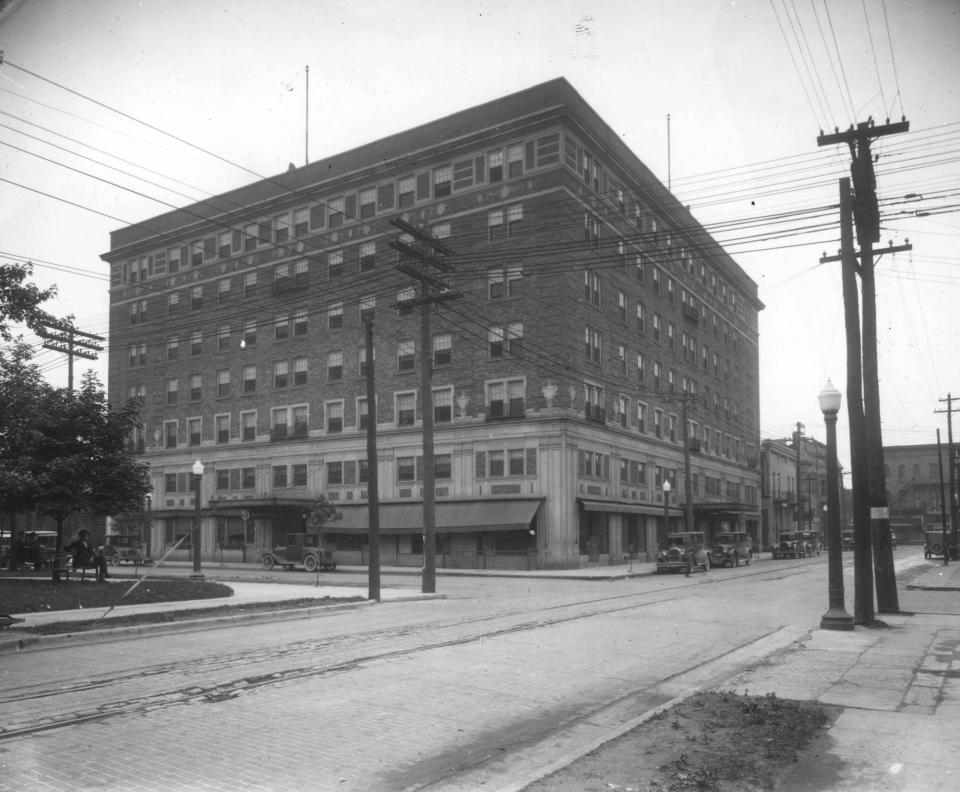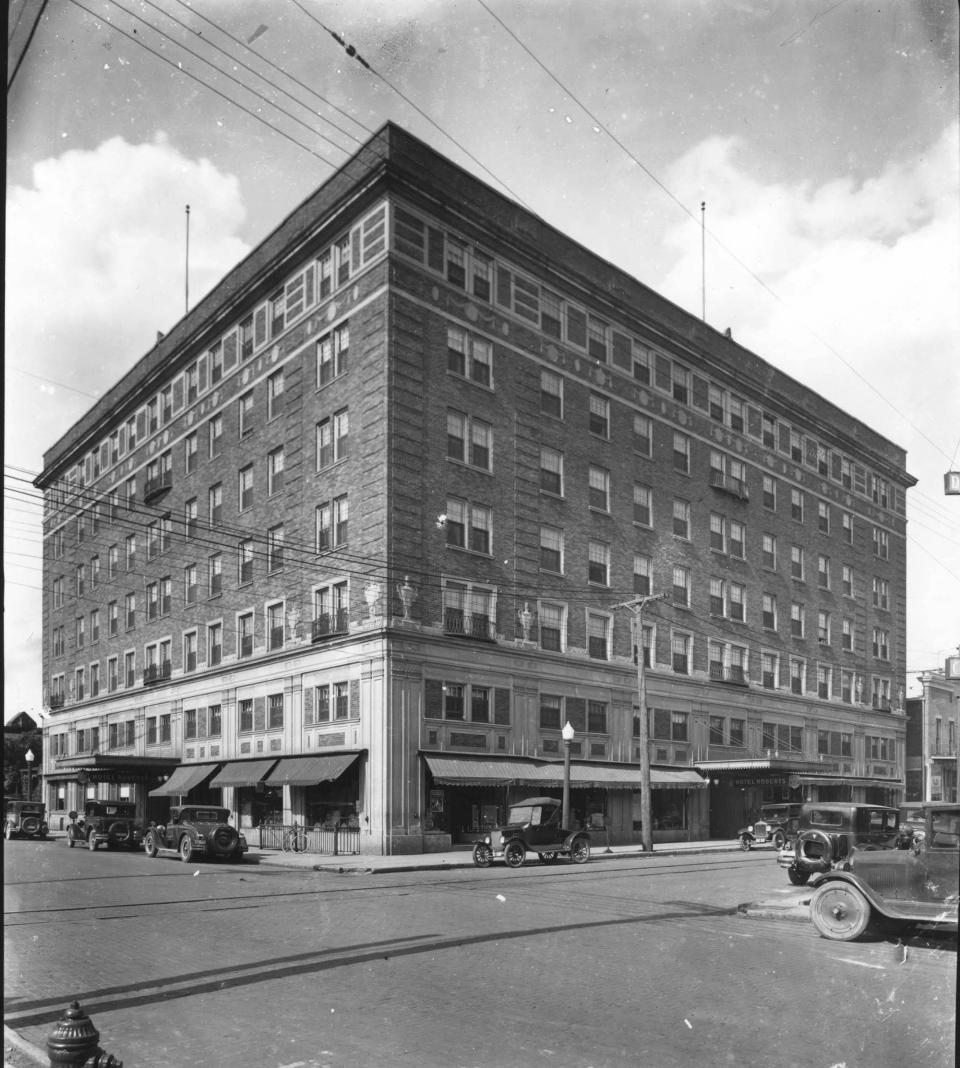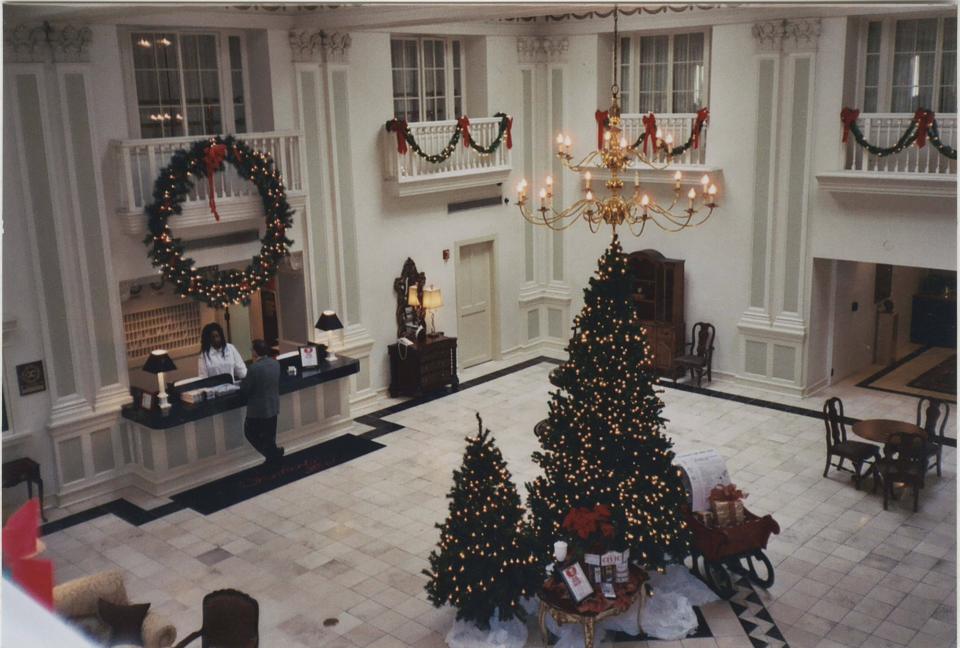ByGone Muncie: An immigrant's story
- Oops!Something went wrong.Please try again later.
Of all the wonderful architecture in downtown Muncie, the Roberts Building is my favorite. The structure is known formally today as the Lofts at Roberts, but historically as Roberts Hotel, or sometimes, as in the roaring twenties and early aughts, the Hotel Roberts. The construction of the building’s original seven-story, colonial revival south section was completed in 1921 by A.R. Stoolman and designed by the Chicago architect, Charles Wheeler Nicol.

The hotel was ceremonially dedicated on Valentine’s Day in 1921. The Muncie Evening Press reported that “throughout the afternoon and until midnight, hundreds of Muncie residents inspected the hotel, which is one of the most beautiful and modern in the state.” Karl Oesterle, vice president of Delaware County National Bank, served as emcee for the evening’s festivities. Muncie vocalist Gertrude Kilgore provided entertainment as 300 guests dined on an “elaborate menu.” General manager Lon Thornburg told a reporter that he “wished the people of Muncie to consider the Roberts their hotel.”
The people did, though only until 1983 when the hotel closed. It re-opened four years later as a Radisson, then changed owners and names a few more times at the end of the 20th century before closing permanently on Halloween in 2006. The Roberts was thankfully saved about a decade ago, repurposed as an 80-unit apartment building after a $17 million renovation. It opened exclusively for Munsonian seniors in 2014.
The building was named after its principal investor, George D. Roberts, a Jewish immigrant from Riga, Latvia. Roberts had made a fortune in Delaware County at the tail end of the Indiana Gas and Oil Boom and invested his wealth in downtown Muncie real estate around the time of the First World War.

Roberts was born in 1874, though his real name was Gershon Stekoll. He married Sarah Plost in 1899 and three years later, she gave birth to their first child, Fannie. The budding family emigrated to the United States in 1904, arriving by way of the S.S. Germanic. After disembarking in New York City, U.S. immigration officials 'gave’' Stekoll the ridiculous name of "John Rockefeller," though he would quickly change it to George Dan Roberts. The Robertses briefly moved to Boston before relocating to Alexandria, Indiana, where George “became engaged in a general salvage business,” according to the historian Frank Haimbaugh. The couple had a second child named Louis Dean in 1906.
The scrap business was lucrative. Roberts secured contracts around East Central Indiana to dismantle and salvage power plants, pipes, and wells as the natural gas ran out. Even though the boom was mostly over by 1910, enough pressure remained in the Trenton Gas and Oil Field to continue pumping oil. Seeing an opportunity, Roberts expanded his business to include petroleum prospecting.
Local newspapers in the 1910s routinely reported on his drilling activities. For instance in late January of 1913, the Evening Press wrote that Roberts struck big “on a lease three miles south of Selma. The well, which was completed Saturday, was shot Monday morning and the oil filled up 400 feet in the casing, indicating a splendid flow.” Roberts signed a contract with Ball Brothers Glass Manufacturing to furnish the company with 150 barrels a day. Two years later, the Muncie Star was referring to Roberts as a “well known oil proprietor.”

Many of his wells were in Delaware County, so the Roberts family moved to Muncie in 1908. They eventually settled into a lovely house at 613 W. Jackson Street in the Old West End. In addition to Fannie and Louis, they welcomed two more children, Bessie in 1908 and Raymond in 1910. The family were members of the Beth El congregation, attending the Hebrew Temple at the corner of Adams and High then after 1922, the synagogue at Council and Jackson.
In July of 1917, Roberts made his first investment in downtown commercial real estate when he bought the Bishop Block for $80,000. The Bishop was located immediately south of the McNaughton Building (known later as Ball Stores). The Evening Press wrote that Roberts “not only made an investment of his savings, but he implanted his faith in the future of Muncie."
Two years later, “the prominent local oil man” bought the Perry Heath property on South Walnut after a fire destroyed the structure. Roberts commissioned architect Cuno Kibele to design a new edifice, which was appropriately named the George D. Roberts Building when it opened in September 1919. The first floor served as home to Stillman’s Department Store until 1972. It was razed five years later.
Roberts also purchased several lots in 1919 “located at the northeast corner of Howard and High streets.” With investors Abraham Lipsitz, Lon Thornburg, Arthur Wells, and Harry Wolf, Roberts formed the Muncie Hotel Corporation to construct a $400,000 hotel on the property. During construction in June of 1920, the Evening Press gushed over the “upholstered chairs and davenports, reading tables and a large open fire-place.” The lobby was being “floored with marble and the walls will be of Caen stone with walnut wainscotting.” I’ve had the good fortune to be in this lobby several times and find it to be one of the most beautiful places in all of Muncie.

When the hotel opened on Valentine’s Day in 1921, Roberts remarked to a reporter that he “was proud to have been instrumental in erecting in Muncie a monument of this kind and that if the people of the city were as well pleased with the institution as he,” then the oil man was well satisfied.
Roberts divested most of his Muncie holdings in the mid-1920s and moved with his family to Tulsa, Oklahoma, where he continued oil prospecting. He lost his fortune during the Great Depression and died of a heart attack in Texas on July 29, 1932.
I should note that two of his grandsons, cousins Henry Kravis (son of Bessie) and George R. Roberts (son of Louis Dean), formed Kohlberg Kravis Roberts and Company with Jerome Kohlberg in 1976. Headquartered at 30 Hudson Yards in Midtown Manhattan, KKR & Co. is a multi-billion dollar private equity and investment firm. In the 1980s, they pioneered the leveraged buyout. If you’ve seen the HBO movie or read the book Barbarians at the Gate, KKR was the company behind the famous leveraged buyout of RJR Nabisco. Kravis and Roberts still serve as KKR’s co-executive chairmen.
In Muncie, the Roberts Building remains a testament to their grandfather’s vision and business acumen. Though the hotel is gone, the edifice stands to remind us that immigrants made our country what it is today. And, in the humble opinion of this public historian, George D. Roberts’ life story illustrates what makes America truly a great nation.
Chris Flook is a Delaware County Historical Society board member and a Senior Lecturer of Media at Ball State University.
This article originally appeared on Muncie Star Press: ByGone Muncie: An immigrant's story
